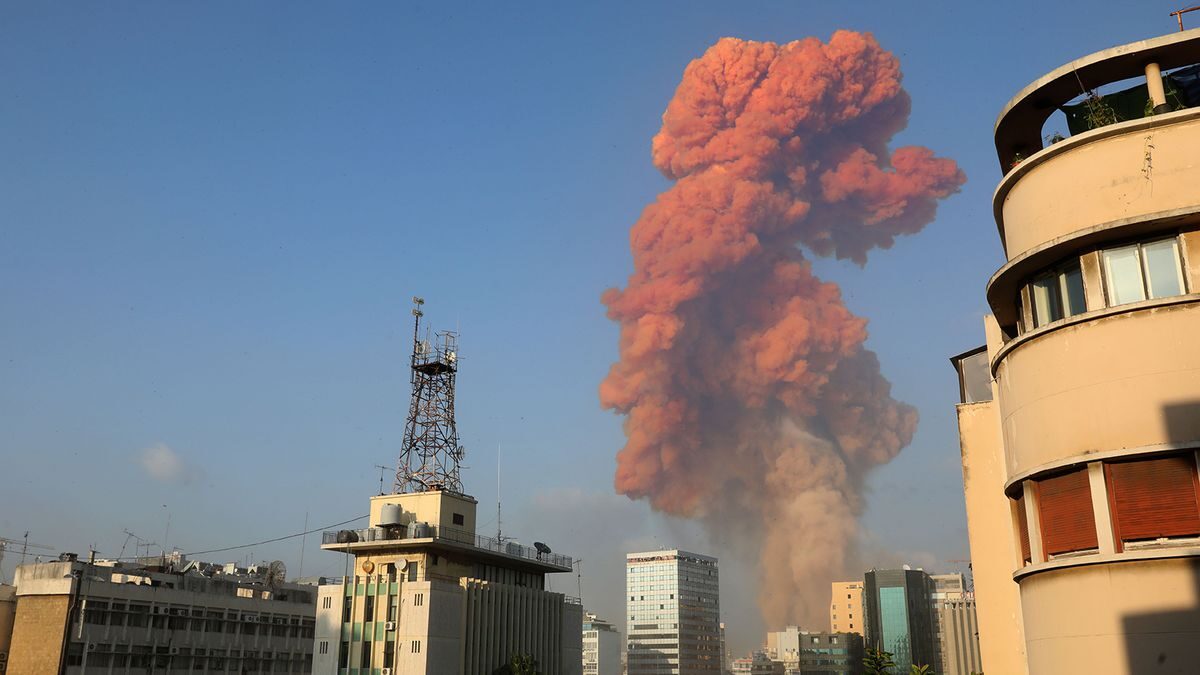
© ANWAR AMRO/AFP via Getty ImagesA MASSIVE explosion in Beirut on 4 Aug was felt for miles around.
At least two explosions in the Lebanese capital of Beirut have occurred near the city's main port area.
Videos from around the city captured the massive explosion and subsequent shockwave Tuesday evening.
A powerful blast has just rocked the Lebanese capital of Beirut. The cause of the massive explosion is as yet unknown.
But multiple social media videos from various angles shows it happened during daylight hours Tuesday, in the late afternoon or early evening local time.
Images show that
a massive shockwave flashed over the city, followed by an immense fireball that appeared several stories high.
It happened near Beirut's port and there are unverified reports of a secondary explosion as well.
Lebanese media is currently speculating that a large fireworks depot exploded, given it's in the vicinity of an area where firecrackers are known to be stored.
It's as yet unknown how many casualties have resulted as no doubt a massive emergency response is underway.
Indeed close-up images just before the larger blast shows a large complex on fire, with either ammunition or fireworks going off, followed by the intense shockwave.
The AP describes
the aftermath:
The explosion appeared to be centered around Beirut's port and caused wide scale destruction and shattered windows miles away.
An Associated Press photographer near Beirut's port witnessed people wounded on the ground and widespread destruction in central Beirut.
Some local TV stations reported the blast was at Beirut's port inside an area where firecrackers were stored.
It's reported caused
widespread damage in all surrounding neighborhoods.
Lately the southern Lebanese border has been scene of brief fighting between the Israeli Defense Forces (IDF) and Hezbollah.
Tel Aviv has recently warned Lebanon that it will be held responsible for any Hezbollah aggression.
Comment: Fireworks? That second blast looks like it was from
at least a thousand-pound bomb. The energy it released is associated with only the largest (non-nuclear) bombs and volcanic eruptions.
In the meantime, we fear a
lot of people may have been killed here.
Lebanon newspaper
The Daily Star suffered massive damage to their main office:
Lebanon's port area, and thus a key economic lifeline for the small Mediterranean country, is certainly wrecked:
Another apocalyptic scene: a priest giving mass is felled from falling debris as he flees a church somewhere in the city:
Here's a still from the 'second' explosion:
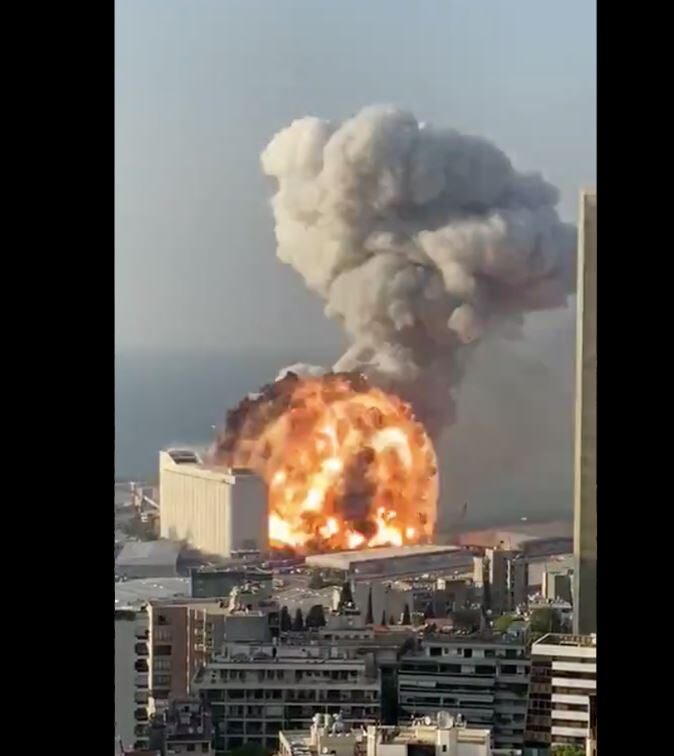
Fireworks?
Turns out 'fireworks' is indeed just a rumor (one started by Lebanon's branch of the Global Fake News Factory):
That global media instantly went with that as a cause is likely a clue as to the real cause. Perhaps it was a Hezbollah munitions storage site, which 'somebody' eliminated, taking Beirut's shipping lifeline with it, along with thousands of lives & livelihoods.
Update 9:45PM CETHere's video footage of the event from real close up:
Strangely (or not), the Israelis are piping up to say that the warehouse stored "munitions confiscated from Hezbollah." So possible motive begins taking shape.
Furthermore:
In fact, on July 31st, the Israeli Defense Minister
specifically threatened to "bomb Lebanese infrastructure," before placing the IDF on 'high alert'.
Update 10PM CETThe closest type of explosion we've seen to this is the one that occurred on 5 August 2019, one year ago tomorrow. It happened when a major munitions facility in the Krasnoyarsk region of Siberia exploded:
In fact, the massive blast in Russia this time last year was part of
a string of strange explosions at Russian military facilities.
Today's explosion in Beirut, however, is an order of magnitude more powerful, and thus destructive.
Update 5 Aug 2020 - 08:30 CETUS president Trump has told reporters that, after speaking with "our top generals," he (and they) seem to believe this was deliberate:
The US Geological Survey
reports that the explosion "generated seismic waves equivalent of a magnitude 3.3 earthquake," with the caveat that if this had occurred underground, the seismic reading would have been significantly higher.
Lebanon was already 'on the brink' before this event. Here journalist and founder of the news site Beirut Report, Habib Battah, explains the dire state the small country is in:
Update 5 Aug 2020 - 13:30 CETThe force of the blast left an enormous crater in Beirut's port:
Update 5 Aug 2020 - 18:30 CETThe ammonium nitrate connectionLebanese officials have indeed acknowledged that over 2,700 tons of confiscated ammonium nitrate had been stored in the warehouse in question for the last
six years. The presence of the nitrate was apparently well-known, and an investigation had been
launched 5 months ago with the goal of preventing any mishaps. For the story of the initial confiscation followed by bureaucratic deadlock, see
here and
here.
The Lebanese Supreme Defence Council has claimed that a spark from
welding work at the site may have caused the initial fire - workmen were supposedly there repairing a faulty door.
But it doesn't really matter whether or not ammonium nitrate was stored there. It requires multiple chemical processes before it becomes an effective explosive. As a fertilizer in farming, it is stored in large amounts in rural areas all around the world. That wouldn't be common practice if there was a general risk of it exploding.
The most likely scenario in Beirut seems to be that a large bomb was transported and assembled there. The fire that preceded the explosion was perhaps a decoy, along with some amount of fireworks thrown in as further decoy. And then the bomb was remote-detonated.
Hezbollah arms storage? Some have alleged that the port was used as weapons
storage for Hezbollah. The head of the port
claims no explosives were stored near the substances alleged to have been responsible. HRW chief Roth posted then deleted an
unhinged tweet blaming Hezbollah, speculating that blowing up the port was their way of saying "don't mess with us for allegedly killing former Lebanese PM Hariri".
In either case, there is the potential for sabotage (in addition to negligence and corruption), given the relatively high profile of both the nitrate and the alleged Hezbollah weapons. (See this
unverifiable report from progressive Jewish writer Richard Silberstein, for example, claiming a "confidential, highly-informed Israeli source" said Israel was responsible. They say the Israelis wanted to destroy a Hezbollah arms depot, but didn't know about the nitrate and accidentally caused a bigger explosion in the process.)
PM Diab has asked for
help from the international community and promised an investigation followed by justice. Both
the U.S. and
Israel have pledged to offer assistance. Russia is
sending a mobile hospital and rescue unit. Among the
100+ dead was top Christian party official
Nizar Najarian. Hundreds are still missing - some may still be buried under the rubble. Over 4,000 were injured, and up to
300,000 Lebanese have been left homeless.
For more pictures and footage of the destruction, see
here,
here,
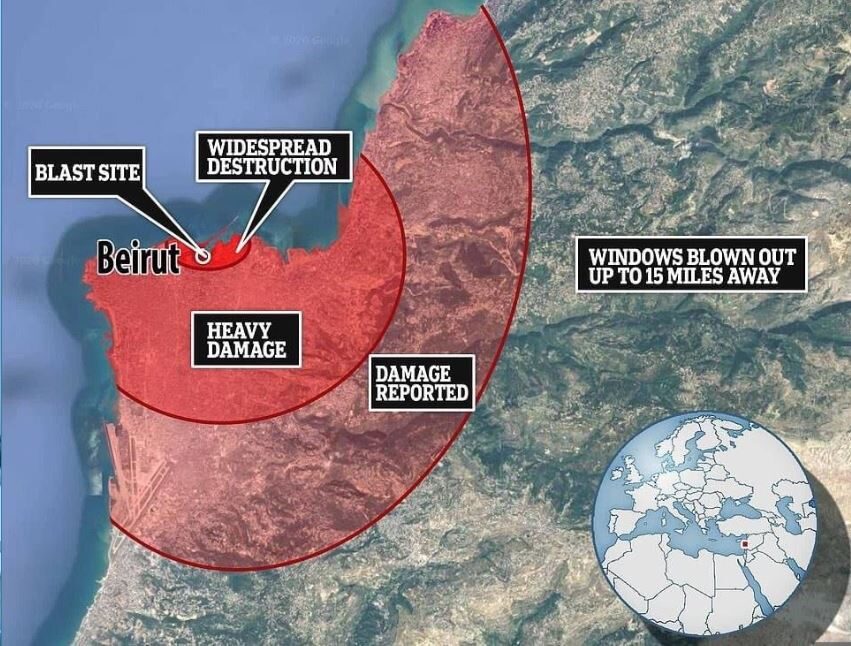


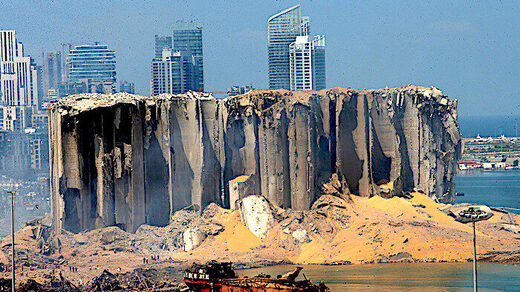
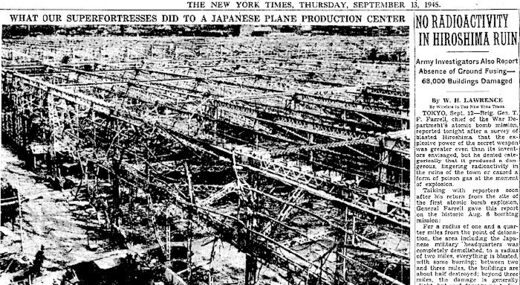


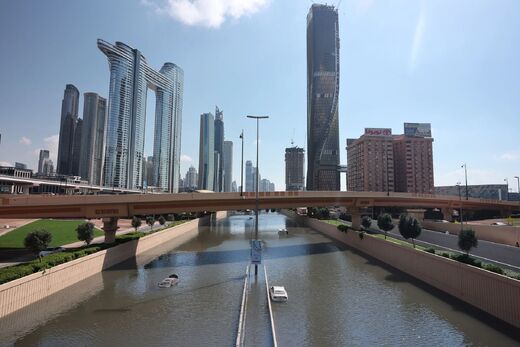
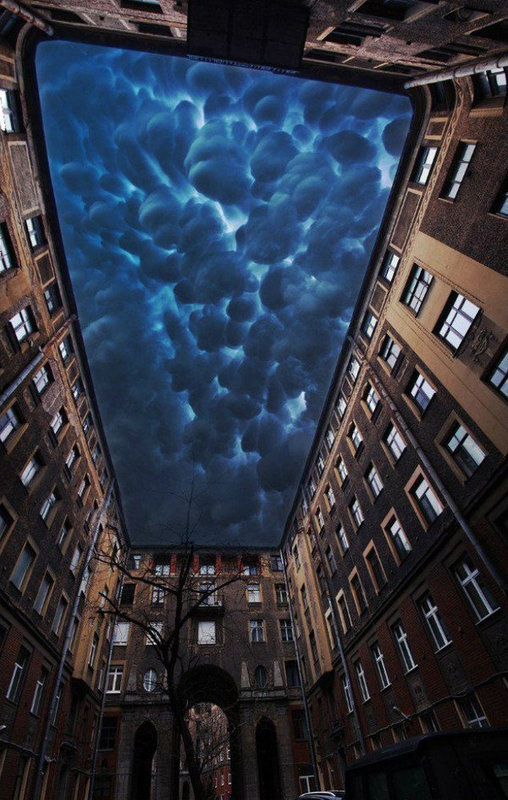
Comment: Fireworks? That second blast looks like it was from at least a thousand-pound bomb. The energy it released is associated with only the largest (non-nuclear) bombs and volcanic eruptions.
In the meantime, we fear a lot of people may have been killed here.
Lebanon newspaper The Daily Star suffered massive damage to their main office:
Lebanon's port area, and thus a key economic lifeline for the small Mediterranean country, is certainly wrecked:
Another apocalyptic scene: a priest giving mass is felled from falling debris as he flees a church somewhere in the city:
Here's a still from the 'second' explosion:
Turns out 'fireworks' is indeed just a rumor (one started by Lebanon's branch of the Global Fake News Factory):
That global media instantly went with that as a cause is likely a clue as to the real cause. Perhaps it was a Hezbollah munitions storage site, which 'somebody' eliminated, taking Beirut's shipping lifeline with it, along with thousands of lives & livelihoods.
Update 9:45PM CET
Here's video footage of the event from real close up:
Strangely (or not), the Israelis are piping up to say that the warehouse stored "munitions confiscated from Hezbollah." So possible motive begins taking shape.
Furthermore:
In fact, on July 31st, the Israeli Defense Minister specifically threatened to "bomb Lebanese infrastructure," before placing the IDF on 'high alert'.
Update 10PM CET
The closest type of explosion we've seen to this is the one that occurred on 5 August 2019, one year ago tomorrow. It happened when a major munitions facility in the Krasnoyarsk region of Siberia exploded:
In fact, the massive blast in Russia this time last year was part of a string of strange explosions at Russian military facilities.
Today's explosion in Beirut, however, is an order of magnitude more powerful, and thus destructive.
Update 5 Aug 2020 - 08:30 CET
US president Trump has told reporters that, after speaking with "our top generals," he (and they) seem to believe this was deliberate:
The US Geological Survey reports that the explosion "generated seismic waves equivalent of a magnitude 3.3 earthquake," with the caveat that if this had occurred underground, the seismic reading would have been significantly higher.
Lebanon was already 'on the brink' before this event. Here journalist and founder of the news site Beirut Report, Habib Battah, explains the dire state the small country is in:
Update 5 Aug 2020 - 13:30 CET
The force of the blast left an enormous crater in Beirut's port:
Update 5 Aug 2020 - 18:30 CET
The ammonium nitrate connection
Lebanese officials have indeed acknowledged that over 2,700 tons of confiscated ammonium nitrate had been stored in the warehouse in question for the last six years. The presence of the nitrate was apparently well-known, and an investigation had been launched 5 months ago with the goal of preventing any mishaps. For the story of the initial confiscation followed by bureaucratic deadlock, see here and here.
The Lebanese Supreme Defence Council has claimed that a spark from welding work at the site may have caused the initial fire - workmen were supposedly there repairing a faulty door.
But it doesn't really matter whether or not ammonium nitrate was stored there. It requires multiple chemical processes before it becomes an effective explosive. As a fertilizer in farming, it is stored in large amounts in rural areas all around the world. That wouldn't be common practice if there was a general risk of it exploding.
The most likely scenario in Beirut seems to be that a large bomb was transported and assembled there. The fire that preceded the explosion was perhaps a decoy, along with some amount of fireworks thrown in as further decoy. And then the bomb was remote-detonated.
Hezbollah arms storage?
Some have alleged that the port was used as weapons storage for Hezbollah. The head of the port claims no explosives were stored near the substances alleged to have been responsible. HRW chief Roth posted then deleted an unhinged tweet blaming Hezbollah, speculating that blowing up the port was their way of saying "don't mess with us for allegedly killing former Lebanese PM Hariri".
In either case, there is the potential for sabotage (in addition to negligence and corruption), given the relatively high profile of both the nitrate and the alleged Hezbollah weapons. (See this unverifiable report from progressive Jewish writer Richard Silberstein, for example, claiming a "confidential, highly-informed Israeli source" said Israel was responsible. They say the Israelis wanted to destroy a Hezbollah arms depot, but didn't know about the nitrate and accidentally caused a bigger explosion in the process.)
PM Diab has asked for help from the international community and promised an investigation followed by justice. Both the U.S. and Israel have pledged to offer assistance. Russia is sending a mobile hospital and rescue unit. Among the 100+ dead was top Christian party official Nizar Najarian. Hundreds are still missing - some may still be buried under the rubble. Over 4,000 were injured, and up to 300,000 Lebanese have been left homeless.
For more pictures and footage of the destruction, see here, here,